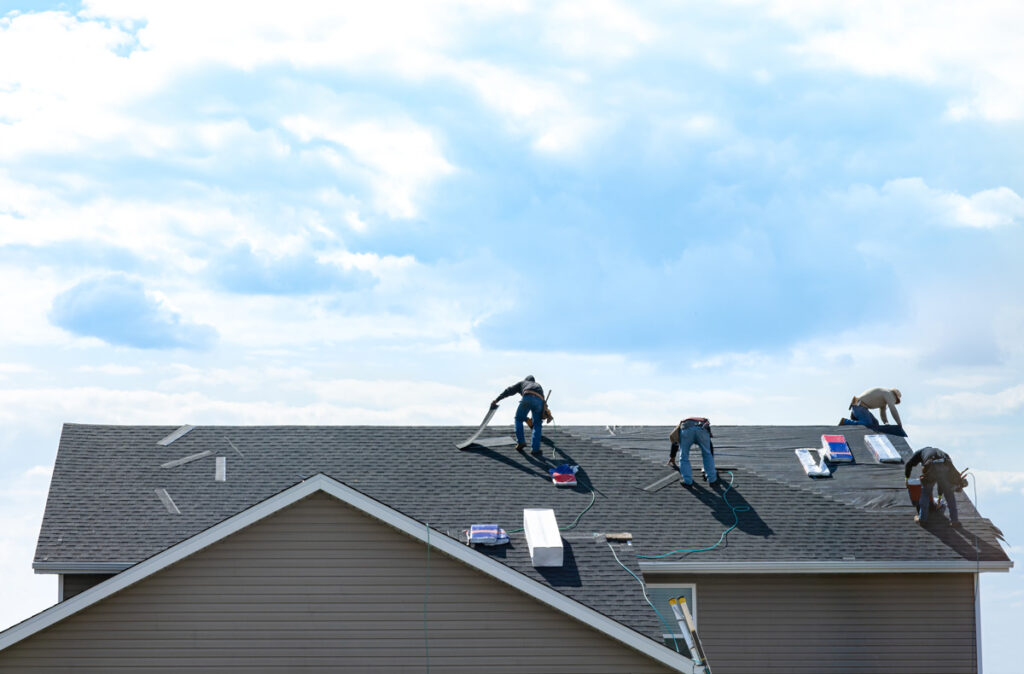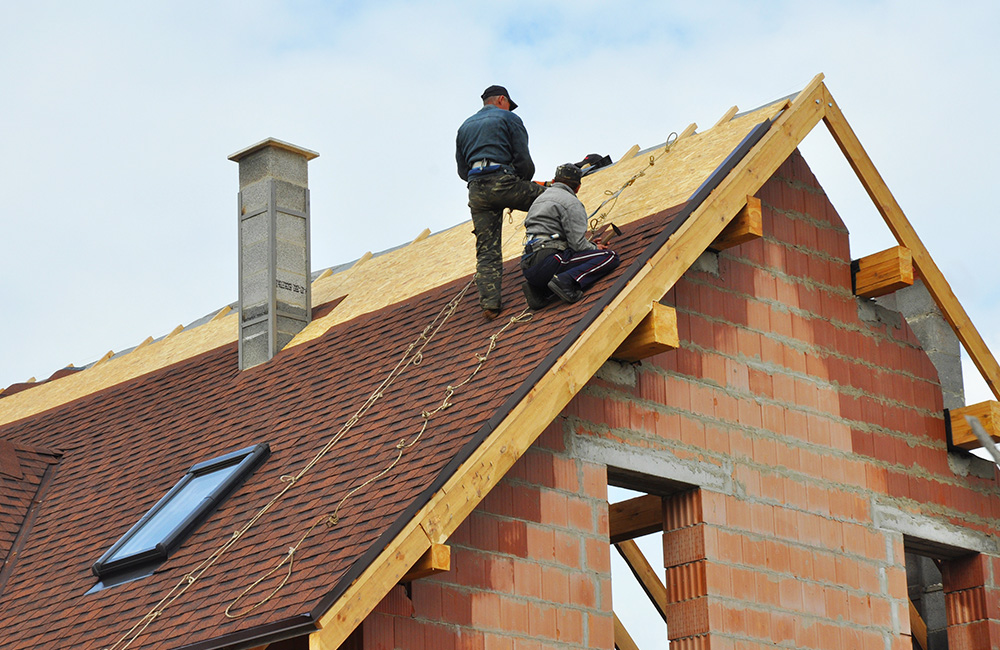Recognizing the Various Sorts Of Roofings: A Comprehensive Guide for Homeowners
In the realm of homeownership, selecting the ideal roofing design is a choice that brings substantial implications for both functionality and aesthetic charm. With a variety of choices-- ranging from the standard gable to the contemporary flat-- each kind offers one-of-a-kind advantages and obstacles that should line up with the house owner's specific demands and ecological factors to consider. Understanding these distinctions not only help in making an enlightened selection yet also affects long-term upkeep and energy performance. As we check out the details of various roofing types, it ends up being noticeable that dimension does not fit all; the appropriate selection may surprise you.
Gable Roofings
Saddleback roofs, characterized by their triangular shape, are amongst one of the most popular roof covering styles as a result of their simplicity and efficiency in shedding water and snow. This design features 2 sloping sides that fulfill at a ridge, enabling efficient drainage and reducing the threat of water build-up. The steep pitch frequently related to gable roofing systems improves their ability to take care of heavy rainfall, making them suitable for numerous environments.
In addition to their useful benefits, gable roofing systems use visual versatility. They can be adjusted to different architectural designs, from traditional to contemporary homes. The style can likewise fit additional features such as dormer home windows, which enhance all-natural light and ventilation in the attic room room.
Additionally, gable roofings give ample area for insulation, adding to energy performance. Home owners can pick from a range of roof covering products, consisting of asphalt shingles, metal, and ceramic tiles, better improving customization alternatives.
Despite their advantages, saddleback roofs might call for added assistance in areas susceptible to high winds or hefty snowfall. Overall, the saddleback roof stays a favored choice because of its mix of functionality, longevity, and visual allure.
Flat Roofs
Level roof coverings are typically identified for their minimalist layout and functional applications, specifically in industrial and industrial settings (oahu roofing). These roofing systems feature a nearly horizontal or straight surface, which enables for simple construction and flexible room utilization. While they may lack the aesthetic allure of angled roofs, flat roof coverings offer numerous advantages, particularly in metropolitan settings where taking full advantage of area is important
Among the key benefits of level roofing systems is their accessibility. House owners can make use of the roofing room for various objectives, such as roof yards, balconies, or photovoltaic panel installations. In addition, flat roofings are usually much more cost-effective to set up and preserve contrasted to their sloped counterparts, as they need less products and labor.
However, level roof coverings do existing specific challenges. Proper drain is important to prevent water merging, which can bring about leakages and architectural damages. Therefore, picking top notch waterproofing materials and normal examinations are critical for guaranteeing long life. Usual materials used for level roof coverings consist of built-up roof (BUR), modified asphalt, and single-ply membrane layers, each offering distinctive benefits. On the whole, flat roof coverings work as a useful and versatile selection for numerous property owners and businesses alike.
Hip Roof Coverings
Hip roofing systems are defined by their sloped sides that merge on top, forming a ridge. This layout is distinctive from gable roofing systems, as all 4 sides of a hip roof covering slope downwards toward the walls, offering a much more stable framework. The angle of the inclines can differ, permitting for flexibility in building visual appeals and capability.
Among the primary advantages of hip roof coverings is their capacity to hold up against heavy winds and damaging climate conditions. The sloped surface areas enable better water drainage, lowering the threat of leaks and water damages. Furthermore, hip roofing systems use boosted attic room area, which can be utilized for storage or perhaps transformed into livable locations.
Nevertheless, constructing a hip roofing can be a lot more pricey and complex than easier roofing system kinds, such as saddleback roofs. The added product and labor associated with developing the slopes and guaranteeing appropriate architectural stability can result in greater expenditures. Despite these disadvantages, many homeowners prefer hip roof coverings for their sturdiness, visual charm, and capacity for energy effectiveness.
Mansard Roof Coverings
Mansard roofing systems, frequently acknowledged by their special four-sided style, feature two inclines on each side, with the reduced incline being steeper than browse around these guys the top. This architectural style, originating from France in the 17th century, is not just cosmetically enticing yet functional, as it maximizes the usable room in the top floorings of a building. The steep reduced incline permits for more headroom, making it an ideal choice for loft spaces or attic rooms, which can be transformed right into living rooms.
Mansard roofs are defined by their flexibility, suiting numerous building styles, from traditional to modern-day. They can be built with various materials, consisting of asphalt tiles, slate, or steel, providing homeowners with a variety of options to suit their preferences and budget plans. Additionally, the style enables the combination of dormer home windows, enhancing all-natural light and ventilation in the upper degrees.
Nonetheless, it is vital to consider the prospective disadvantages. Mansard roofings may call for even more upkeep because of the intricacy of their style, and their high slopes can be testing for snow and rainfall drainage. Overall, mansard roofings combine sophistication with practicality, making them a prominent option among property owners looking for unique architectural features.
Shed Roof Coverings
As property owners progressively look for simplicity and functionality in their architectural designs, lost roofing systems have actually arised as a popular choice. Defined by a single sloping aircraft, a shed roofing presents a minimalist visual that complements various home designs, from modern to rustic.
One of the main advantages of a shed roof is its straightforward building and construction, which usually equates to lower labor and product costs. This style permits for efficient water drainage, minimizing the threat of leaks and water damages. Additionally, the vertical incline gives ample area for skylights, improving natural light within the interior.
Dropped roofing systems additionally provide versatility in regards to use. They can be effectively integrated right into additions, garages, or outside structures like structures and sheds. In addition, this roofing system design can fit various roofing products, including metal, asphalt tiles, and even environment-friendly roofs, straightening with green efforts.
Nonetheless, it is important to consider local climate problems, as hefty snow tons may necessitate adjustments to the roofing's angle or structure. Generally, shed roofings present a useful and aesthetically pleasing option for home owners looking to maximize capability without compromising design.
Conclusion


Gable roofs, identified by their triangular form, are among the most prominent roofing styles due to their simplicity and effectiveness in shedding water and snow. oahu roofing. The steep pitch typically connected with gable roofings enhances their ability to handle heavy precipitation, making them appropriate for numerous climates
While they might lack the visual allure of pitched roofing systems, level roof coverings use numerous advantages, especially in urban settings where making best use of space is important.
